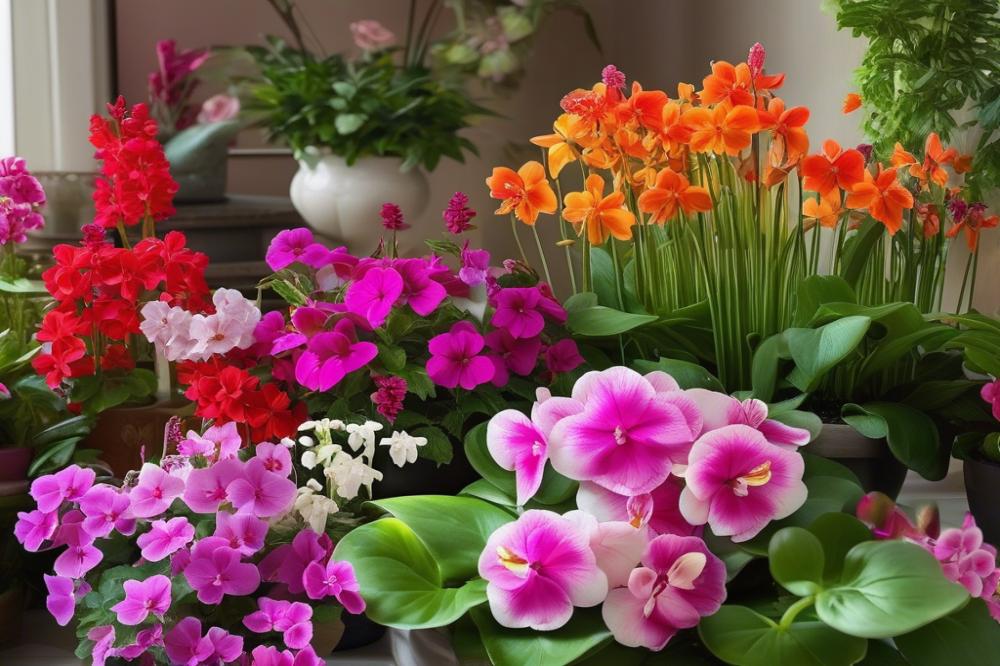The Difference Between Shrub Roses and Hybrid Roses
Understanding the different types of roses is essential for anyone involved in gardening. Whether you’re a seasoned horticulturist or a novice, knowing how to choose the right rose varieties can greatly influence your garden’s success. Among the many options available, Shrub Roses stand out for their robust nature and adaptability. These plants not only provide stunning blooms but can also thrive in various landscape designs.
Gem-like colors and diverse bloom types make roses a favorite among gardeners. Yet, with so many choices, confusion can arise. This article will clarify this confusion by examining shrub roses and their importance in rose cultivation. Additionally, we will touch on Hybrid Roses, which offer their own unique characteristics and challenges.
By delving into the specifics of flower care and rose maintenance, this piece aims to equip you with knowledge about essential pruning techniques, disease resistance, and the overall care of perennial plants. Each type of rose has distinct advantages, and recognizing these differences can build a flourishing garden. Join us as we explore the nuances that make shrub roses and hybrid roses significant in the world of gardening.
Overview of Shrub Roses
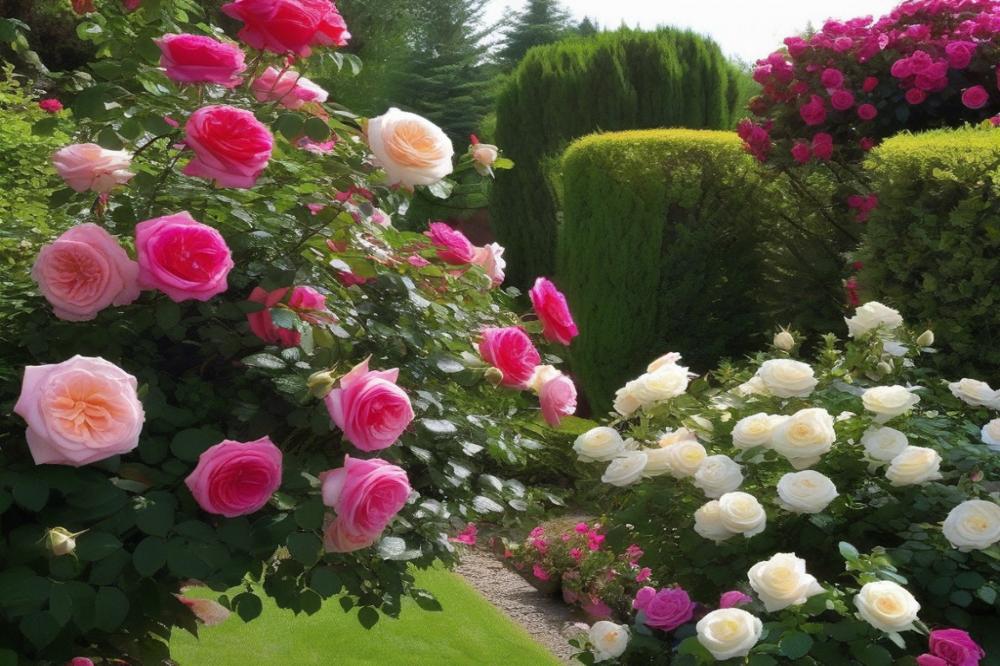
Shrub roses are a popular choice among gardeners for many reasons. These plants provide sturdy bushes filled with blooms, making them visually appealing. Typically, they grow to a height ranging from two to five feet, which offers versatility in many landscape designs.
Growth habit is key to understanding how these plants function. They tend to have a bushy form, which contributes effectively to garden aesthetics. Certain rose varieties feature a more compact appearance, while others may spread wider, perfect for filling gaps in perennial plant gardens.
Hardiness is a significant attribute of shrub roses. Many cultivate them because they withstand different weather conditions. Disease resistance also plays an important role in their popularity. Growers often prefer these roses since they require less flower care compared to hybrid options.
Some commonly grown varieties include the ‘Knock Out’ series, known for their vigorous growth and continuous blooms. Another appealing choice is the ‘Fairy’ rose, which produces small flowers in lovely clusters. These options make shrub roses a favorite amongst gardening enthusiasts.
When planning for landscape design, it’s crucial to consider the various bloom types and colors available. Vibrant hues can create stunning focal points or soften a garden’s overall appearance. Pruning techniques also affect growth, as proper upkeep encourages healthier plants and more abundant flowers.
Incorporating these roses into a garden elevates the overall look and adds variety. Their adaptability means they will enhance both formal and informal landscapes. For those wondering about rose cultivation, shrub roses fit seamlessly with other perennial plants, leading to cohesive and beautiful outdoor spaces.
Ultimately, shrub roses are a smart choice for both novice and experienced gardeners. Their low maintenance and robust nature make them a wise investment for any garden lover. They invite up close exploration, allowing individuals to connect with nature while taking pleasure in their stunning blooms.
Overview of Hybrid Roses
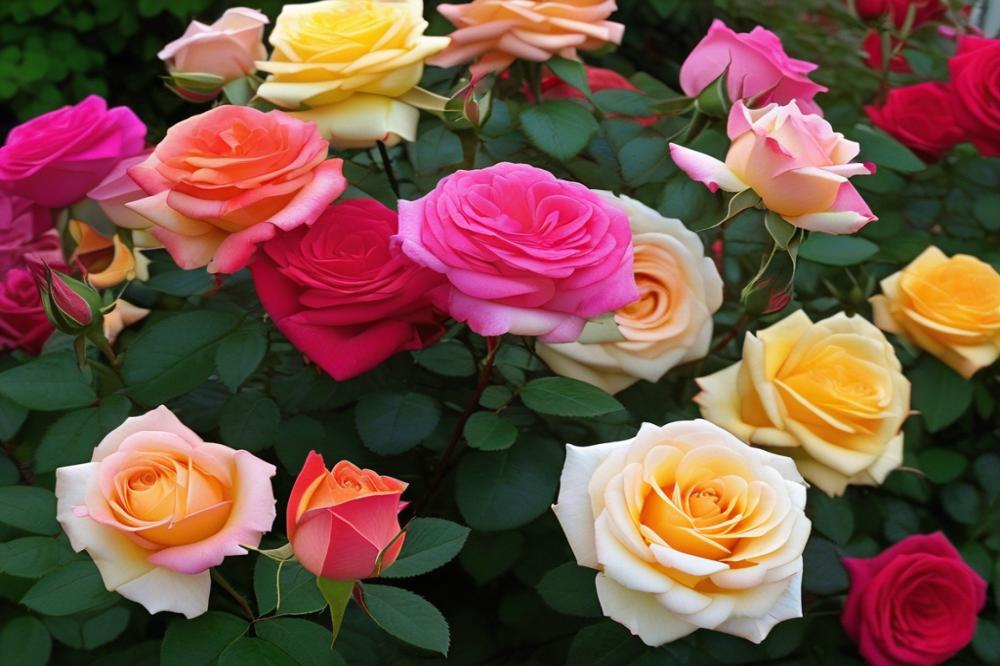
Hybrid roses are a captivating segment of the rose family, known for their painstakingly hybridized lineage. Breeding techniques play a significant role in their creation. Gardeners and breeders often cross different types of roses to develop plants with desirable traits. This includes enhancing disease resistance and ensuring vibrant bloom types. The result is a diverse selection of flowers that captivate anyone who sees them.
With an array of rose varieties to choose from, hybrid roses stand out not only for their beauty but also for their garden versatility. Popular types include hybrid teas, floribundas, and grandifloras. Hybrid teas provide elegant, single blooms on long stems, making them splendid for cutting and display. On the other hand, floribundas produce clusters of flowers, offering gardeners a burst of color. Grandifloras combine the best of both worlds with tall stems featuring large flowers in clusters. Each type has its unique charm and appeal.
Many gardeners appreciate hybrid roses for their resilience and floral traits. These roses often exhibit a broad range of colors and shapes, making them suitable for various landscape designs. Their fragrant blooms can enliven any garden, while also attracting pollinators. A crucial aspect of rose cultivation is understanding the specific care each variety requires. Proper pruning techniques help maintain their shape and encourage healthy growth. Regular rose maintenance is essential to keep them thriving throughout the seasons.
Beyond their aesthetic appeal, hybrid roses have also gained popularity due to their potential as perennial plants. Unlike some other varieties, they can continue to flourish year after year with the right attention. This longevity makes them a wise choice for garden enthusiasts who seek enduring beauty. When considered for gardening projects, they make an excellent addition to borders, beds, or even containers.
Whether one is an experienced gardener or a novice, hybrid roses offer something for everyone. Their distinctive aesthetics and ease of care make them a favorite in flower care circles. With proper guidance, anyone can cultivate these stunning plants in their gardens. The rewards of nurturing hybrid roses go beyond just their looks; they create beauty and joy through every blooming season.
Key Differences Between Shrub Roses and Hybrid Roses
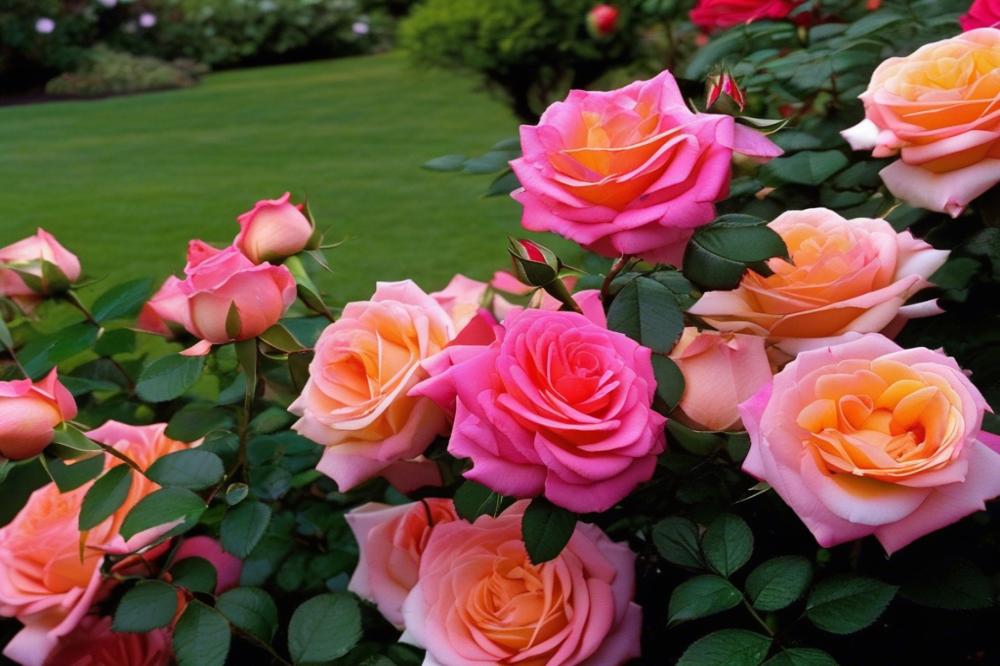
When comparing shrub roses and hybrid roses, growth habits often serve as a defining factor. Shrub roses typically have a bushy, rounded shape, making them excellent for informal hedges or borders. In contrast, hybrid roses exhibit a more upright and structured growth, which can benefit formal landscape designs.
Bloom types also set these two categories apart. Shrub roses often bloom in clusters, creating abundant displays of color over extended periods. Hybrid roses, however, tend to produce larger, individual blooms with distinctive forms and fragrances, catering to those who appreciate vivid aesthetics in flower care.
Disease resistance stands out as another significant difference. Generally, shrub roses boast superior resistance to common rose diseases due to their hardiness. Many hybrid varieties, while stunning, may require more attention and care to prevent diseases like black spot or powdery mildew. This reality can sway your decision in rose cultivation.
Maintenance needs vary as well. With shrub roses, less frequent pruning techniques are essential, simplifying the workload for gardeners. On the other hand, hybrid roses demand regular maintenance, including strategic pruning to promote optimal blooming. The effort involved can influence gardeners’ choices when deciding which rose varieties to grow.
Finally, consider how these differences impact overall gardening experiences. Shrub roses can provide reliable beauty with lower care requirements, appealing to busy gardeners. Meanwhile, those who enjoy hands-on flower care may prefer hybrid roses for their magnificent blooms and the satisfaction that comes from managing their health.
Cultivation Practices for Shrub Roses
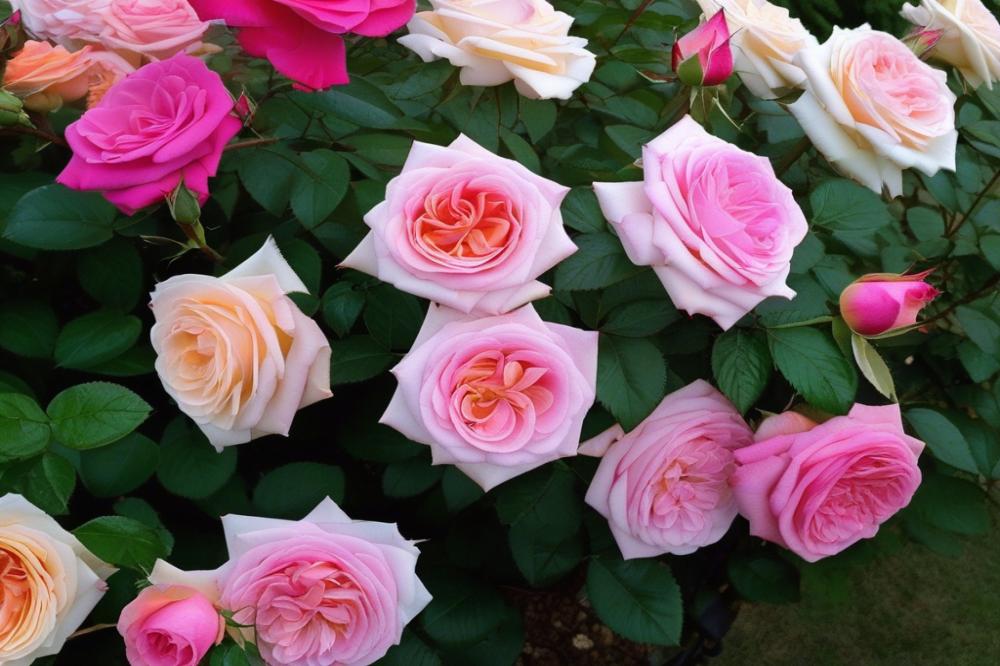
Growing shrub roses can be both rewarding and enjoyable. First, soil selection plays a crucial role. Well-draining soil rich in organic matter is ideal. Sandy loam mixed with compost works well. Testing the soil’s pH may reveal if it’s suitable. A pH of 6.0 to 6.8 is generally best.
Watering requirements are important for healthy plants. Shrub roses thrive with deep watering once a week during dry spells. This encourages strong root growth. Avoid watering the foliage to reduce disease risk. Instead, focus on the soil around the base of each plant. Mulching around the base helps retain moisture too.
Fertilization is another essential aspect of rose cultivation. Choose a balanced fertilizer designed for flowering plants. Applying it in early spring promotes robust growth and vibrant blooms. Repeat applications every six weeks during the growing season can support ongoing health. Always follow the recommended guidelines on the product label.
Pruning techniques vary to keep these roses healthy. Early spring is the right time to prune. Start by removing dead or damaged wood. This allows air circulation and sunlight to reach the inner parts of the plant. Be careful not to over-prune. Each spring, aim for a shape that encourages outward growth.
Rose maintenance is not just about pruning. Regularly checking for pests and disease resistance is vital. Keeping an eye out for aphids or black spot will save headaches later. If issues arise, treat them promptly with appropriate products. Adding systemic insecticides can help prevent infestations.
Fostering the right conditions in your garden leads to stunning flower care. Different rose varieties bloom at various times. So, plan your landscape design to extend the blooming season. Combining perennial plants along with shrub roses creates a visually appealing garden. Do not underestimate the beauty these hardy plants can add to your outdoor space.
Cultivation Practices for Hybrid Roses
Growing hybrid roses requires careful attention to specific needs. Sun exposure is essential for their success. Ideally, these plants thrive in spots that receive at least six hours of direct sunlight each day. Without sufficient light, blooms can become sparse and less vibrant.
Space is another critical factor in rose cultivation. Adequate spacing allows for improved air circulation, which helps prevent diseases. When planting, position these rose varieties approximately two to three feet apart. This distance fosters healthy growth and blooming.
Caring for hybrid roses involves regular maintenance routines. Flower care techniques include proper watering schedules and understanding the soil requirements. Soil should ideally be well-draining and enriched with organic matter. Regularly testing soil pH can lead to healthier plants. A pH range of 6.0 to 6.8 is generally recommended.
These roses can be susceptible to various diseases. However, many hybrid varieties exhibit improved disease resistance. Choosing resilient plants can reduce the risk of common issues such as black spot and powdery mildew. Gardeners should still remain vigilant and monitor for signs of distress.
Pruning techniques play a significant role in maintaining rose health. Late winter or early spring is the best time for pruning. Remove dead or crossing branches to encourage better airflow and promote robust growth. This practice not only helps the plant but also enhances the overall landscape design.
Challenges can arise, even with hybrids. Pests may invade your garden, leading to potential damage. Keeping an eye out for harmful insects is crucial. Regular inspections allow for quick action if problems occur. Rose maintenance also includes mulching. Mulch helps retain moisture while suppressing weeds, creating a perfect environment for growth.
Fostering a beautiful garden with hybrid roses can be a rewarding endeavor. With the right techniques, anyone can enjoy their stunning blooms throughout the growing season. Remember, each step in their care is an investment in a vibrant and flourishing landscape.
Incorporating Shrub and Hybrid Roses into Landscape Design
Integrating roses into landscape design adds beauty and character to any garden. Begin by choosing the right rose varieties. Different roses offer various bloom types and colors that can enhance your outdoor space.
When planning your garden layout, think about spacing. Proper distances between plants allow air to circulate, reducing the risk of disease. Hybrid roses often need more space due to their larger size and fuller blooms. Consider placing them near pathways or entrances to create a welcoming atmosphere.
Combining hybrid roses with perennial plants brings diversity to your landscape. Consider companion plants that bloom at different times. This approach will help maintain visual interest throughout the seasons. Plants like lavender or salvia can complement hybrid roses beautifully. Flower care should focus on maintaining the health of all varieties.
Pruning techniques play a vital role in rose maintenance. Regular trimming can promote new growth and vibrant blooms, especially for hybrid roses. Make sure to research the specific needs of each variety you choose. Understanding rose cultivation practices can make a noticeable difference in the garden’s overall appearance.
Selecting disease-resistant varieties boosts your garden’s health. They require less intervention over time, letting you enjoy a more carefree gardening experience. Map out your garden before planting to visualize how everything will come together. This should include the arrangement of colors and height of the plants.
Ultimately, integrating both types of roses creates a stunning display. Taking the time to plan will yield rewards in your landscape design. Balance is key, and careful consideration of each plant’s needs will allow your garden to thrive. Embrace the beauty of roses in your outdoor space today!
Final Thoughts on Choosing the Right Rose
Understanding the differences between rose varieties is essential for any gardening enthusiast. Hybrid roses tend to be more structured and elegant, often showcasing vibrant colors and impressive blooms. They usually require more attention and maintenance, making them ideal for people who enjoy tending to their plants regularly. In contrast, multitudes of benefits come with the hardiness and resilience of certain other roses. Their natural growth habits and adaptability can create lovely landscapes with less effort.
Selecting the right type of rose plays a significant role in achieving your gardening goals. Consider your environment, sunlight availability, and preferred level of care. Rose varieties appeal to different needs and tastes. For example, while hybrids may captivate with their beautiful forms, the ease of care with other flowering shrubs can be more beneficial for busy gardeners.
Moreover, proper care enhances the health and beauty of your roses. Regular watering, pruning, and fertilization can make a big difference. Healthy roses add joy and vibrancy to any garden space. They also attract pollinators and create a serene atmosphere.
Why not experiment with both types in your gardens? Each offers something special. Mixing them could lead to an extraordinary display. You might discover new favorites while enjoying the process of nurturing these beautiful plants. Embrace the opportunity to learn and grow with your roses!


